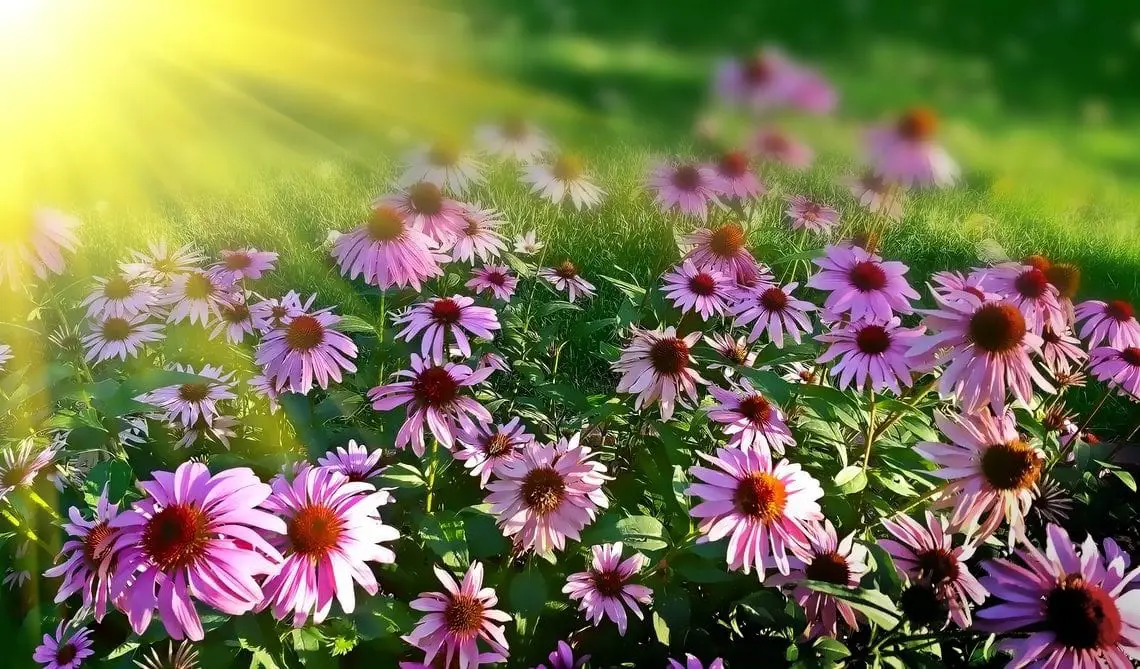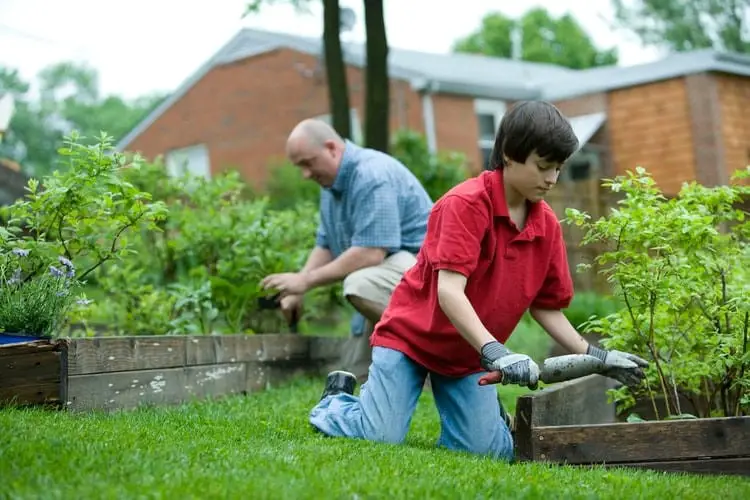
Flower gardens look wonderful but growing one demands your time and a lot of care. If you are expecting good returns from your flower garden, just watering them is not sufficient. You need to see to it that the weeds do not spoil your flower plants, as well as use the best of fertilizers to control pests. This article talks about a few simple tips that help you efficiently take care of your garden flowers.
Regularly water the flowers, but wisely!
Water your flower plants every day during summer. Since plants quickly lose water during this season, their growth gets affected if not watered appropriately. During the cool seasons, you can water your flower plants twice or thrice a week, depending upon the moisture the soil in your garden retains and the amount of rainfall received. Further, you need to learn the water requirement of each species of flowers in your garden to ensure you water them correctly. Garden flowers bloom and offer a stunning appeal when they are rightly watered.
There’s a lot to learn when it comes to watering the flower plants: when, how much, how? Moving around sprinkling water on the flowers does not always work. It is not a wise way of watering. Some flowers especially need deep watering to fully bloom. Learn to water your pants wisely if you want to see your flowers keep up their blooming.
Use high-quality fertilizers
Overtime, soil loses its fertility. If you are looking at growing beautiful flowers, make sure to regularly check the soil for its fertility. When you realize your garden soil needs soil microbes and other nutrients, look for a water-soluble, preferably a liquid fertilizer loaded with soil-enriching nutrients. However, before using it on your soil, check the directions for use. You need to apply the right quantities at the right time, failing which flower plants get scorched or die. You can also try searching for an organic fertilizer to ensure safety for your family members and pets.
If you have ever observed the fertilizer packaging, you might have noticed the amounts of nitrogen, potassium and phosphorous present in it by percentage. Does it add up to 100? No! Why do you think so? This is because the package contains other filler materials such as limestone/sand. Potassium promotes flower formation, while nitrogen helps in foliage growth. Phosphorous is required for the roots. All these nutrients are required for your flower garden. Take note, too much fertilizing can damage your plants, while too little can reduce the bloom count. Moreover, not all flowers need nutrients in the same quantities. Roses require more nutrients for blooming while most big flowers and wildflowers can satisfy their appetite from the nutrients available in the soil.
Remove weeds
Weeds are unwanted plants that grow very quickly. They absorb water and nutrients from the soil and leave little or nothing for your garden flowers to grow. You can easily get rid of the weeds by uprooting them if you have a small garden with pots and vases. However, if you have your flower garden spread over a large area, it would be wise to have some gardening tools to quickly remove the weeds.
Mulching
Mulching is a commonly seen garden practice in areas that receive very less rainfall. The practice allows the soil to retain its moisture besides offering benefits like regulating the temperature of the soil and controlling weeds. Mulching also involves covering the soil with synthetic or natural materials. Mulches are best recommended if you live in an area with water scarcity but be careful when choosing them. Many mulches spoil the very beauty of your flowers, which could be very disappointing. Some commonly used mulches are grass, wood chips and leaves.
Provide your flowers sufficient sunlight
Sunlight is a significant source of energy required for the plants to grow well. Your flowers will look vibrant and fresh only when they receive good sunlight. So, if you are planning a flower garden, make sure to establish one away from tall structures and trees. They may prevent sunlight from reaching the flowers/flower plants. Another thing to note, the garden flowers should not be exposed to more than required sunlight as well. So, if you think your flowers are getting too much sunlight, place a barrier between sunlight and the flowers for a few hours in a day.
Control Pests
Pests such as bugs, aphids, white flies, mites and gnats can attack your garden and easily kill your beautiful flowers. One way of keeping the pests away is by regularly de-weeding your garden. You can control other pests by placing traps and barriers. If your flower garden is attacked by pests accidentally, you can use a top grade pesticide to kill the organisms. However, if your plants are affected heavily, it is best advised to remove them to avoid the spreading of pests to the other flowers and plants.
Prevent Plant Diseases
Bacteria, viruses and fungi harm the flowers. If you are growing a flower garden and have great expectations from your flowers, take care to control plant diseases. Some common diseases found in flowering plants are anthracnose, ovulinia petal blight, bacterial leaf spot, white rust etc.
· Avoid using excess water to prevent fungal diseases found in flowering plants.
· De-weed regularly and use clean pruning tools to prevent bacterial and viral diseases
· If your flower plants are already infected by bacteria or virus, use an appropriate chemical to kill the harmful microorganisms.
There are many pesticides and fungicides available on the market. Please take some time out to research the best one before placing an order. Most importantly, go through the manufacturer’s instructions before using it on your flowers.

Protect your flowers from animals
Some animals feed on or damage the garden flowers and plants. Install a barrier, a wire fence preferably, to avoid cats, dogs, and other herbivore animals. This protects your garden while keeping it visible.
It is easy to prevent animals like cats and dogs from entering your garden but you need to take extra care to avoid small rodents. Keep a check on your garden to avoid your flowers getting damaged by these animals.
Pruning and Pinching
Pruning is an important part of flower garden care. The procedure involves cutting the overgrown branches to achieve compact shapes and uniform heights. On the other hand, Pinching involves removing the tips of stems to promote lateral growth. Pinching the plants enhances branching, thereby increasing the opportunity for more flower formation.
Thinning and Culling
Thinning is a gardening practice where excess plants are removed to make space for the other plants. This procedure is recommended if you have a small garden and cannot accommodate all the flowers.
Culling is a process where the diseased, infected and weak plants are removed to make room for the healthier plants. If you have inferior or diseased plants in your garden, get rid of them right away so that the other flowering plants can grow properly. If proper care is not taken at the right time, the bacteria/virus/fungi spreads to the other flowers, spoiling your entire flower garden.
Deadheading
This is a procedure that involves removing dead or old flower heads from your flower garden plants to promote blooming. Dead flower heads can be removed using your fingers, however, if you have a large garden and many old and dead heads to remove, we suggest using a shearing tool for the purpose. Deadheading is a simple process that keeps your garden tidy.
Clean your garden tools regularly
Are you aware that your garden tools can spread diseases? That’s right. If your pruning and weeding tools are not cleaned thoroughly, they may have harmful microorganisms that can spread dangerous diseases to the garden flowers. You are recommended to use a chemical such as chlorine bleach to disinfect your garden tools. Dip the weeding and pruning tools in the chemical for about 5-10 minutes and store it in a clean and dry place.
Get new soil
Even after taking all the care, if the flowers do not grow properly, it means the soil has lost its fertility. You will need to replace the soil under such circumstances. Look for a renowned soil supplier in your locality and ensure to fumigate it before using it for your garden. A good soil with rich nutrients can sustain plants and flowers for a long time.
Conclusion
The above-mentioned tips are simple and very easy to practice. However, you need to regularly check your flowers and take the right measures before things go out of control. Apart from all points discussed in the aforesaid paragraphs, it is also significant to stay updated about the latest gardening technology, tools and techniques that help simplify flower care.
Flowers are beautiful, and according to us, nothing in nature comes close to a fully blooming colorful flower. The flower plants also come in a wide range and it is up to your interest to choose which one to grow. All the best to growing a colorful flower garden!
